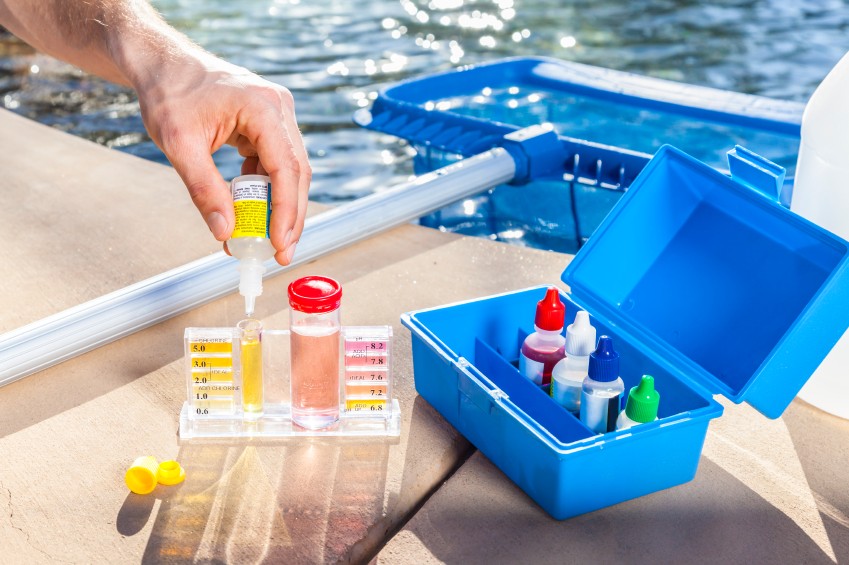Learn More
How to Maintain Your Swimming Pool
Keeping the pool nice and clean doesn’t have to be hard work. Regular cleaning and maintenance are crucial to keeping the water safe for the whole family to enjoy.
All types of pools require cleaning to remove the dirt, leaves and other substances they may collect. The kind of cleaner you need depends on:
- the type of pool (in-ground or above-ground)
- the pool size
- the filtration system and plumbing you have
- the amount of leaves it collects
- what sort of budget you have
Three Ways to Maintain Your Swimming Pool
1. Buy a mechanical pool cleaner
They are called a Creep Crawly. They’re the cheapest and one of the more popular automatic cleaners. A more expensive type is the pressure cleaner, and more expensive again are the robot cleaners.
2. DIY cleaning
The cheapest option is to do it yourself by using a pool hand vacuuming. The vacuum is attached to your skimmer box to create suction and then you manually push the vacuum around the surfaces of your pool with a pole. Typically, this will take between an hour and an hour and a half, and you’ll need to do it once a week.
3. Employ a pool cleaner
If you prefer to leave the cleaning to someone else, there are plenty of pool-cleaning services around. They’ll also check everything’s operating correctly and do necessary maintenance.
Pool chemicals
All pools develop bacteria which can pose serious health risks hence why the regular sanitisation. Rain, water top-ups, leaves, dust, grass and even people all cause bacteria to grow; these factors, along with the size of your pool, will determine the level of sanitisation you need. The most popular chemical is chlorine. There are other options to keep pool water clean and in balance – such as using ozone gas, UV sterilisation, bromine or ionisation.

There are three main ways domestic users can keep their pool chlorinated:
- By hand, which involves adding chlorine manually.
- By installing a salt chlorinator, which produces chlorine and is the most common form of domestic pool chlorination in Australia.
- By installing a liquid chemical feeder, which automatically adds chlorine.
Ways to Heat your Pool in Winter
In cooler seasons, heating your pool can give you the opportunity to swim all year round. The best heating choice for you will depend on where you live, your budget, and how you use your pool. An ideal water temperature is said to be around 25°C.
No matter how you heat your pool, a solar/thermal blanket is an excellent way to reduce heat loss overnight. These blankets not only keep the heat in, they also reduce evaporation.
1. Solar heating
If you live in an area with a lot of sun and you have a large roof area, solar heating is an efficient option to maintain your swimming pool. Solar heating works by pumping pool water into rubber matting that is installed on your roof. The matting is hot from the sun, and transfers the heat to the water before it returns to the pool.
- In order to be effective the rubber matting should be equal to at least 80% of the surface area of your pool. Ideally the matting should be installed on north- or west-facing roofs.
- While solar heating is the most energy efficient, a cloudy day could leave your pool too cool for a dip. But in warmer, sunnier climates it’s realistic for a solar system to heat the water to 17–20 degrees, 10 months a year.
- A solar controller allows you to preset the water temperature you want.
- If you live in a tropical climate where your pool water becomes too warm to be refreshing, a solar heating system can be used to cool it down. The water is cooled by pumping it through your rubber matting at night.
2. Gas heating
If you have access to natural gas, you can use gas heating to maintain your swimming pool at a constant temperature – or, alternatively, just turn it on occasionally when you feel like a swim.
- If you want constant heat, you can use a thermostat to maintain the temperature.
- Occasional use will be more economical but it will require planning as the water will take between 12 and 24 hours to reach its ideal temperature.
3. Electric heating
If want your pool to stay at a steady temperature for 12 months a year, a heat pump can be a good option. Heat pumps use the same technology as air conditioning and refrigeration. In simple terms, they draw water in from your pool and pump it through a heat exchanger, which is very energy efficient.
Initially heat pumps will take two to four days to get your pool to an adequate temperature, so some forward planning is needed if you only heat your pool occasionally.
